PLAY and LEARN
Chinese
Ana Lomba and Marcela Summerville
with Lucy Lee Illustrations by Pedro Prez del Solar and Corne Cartoons/Enroc Illustrators

This book is dedicated to Anas beloved daughter, Marina, a special-needs child who reminds us every day of the miracle of learning.

Copyright 2012 by Ana Lomba. All rights reserved. Except as permitted under the United States Copyright Act of 1976, no part of this publication may be reproduced or distributed in any form or by any means, or stored in a database or retrieval system, without the prior written permission of the publisher. ISBN: 978-0-07-178169-5 MHID: 0-07-178169-2 The material in this eBook also appears in the print version of this title: ISBN 978-0-07-175970-0, MHID 0-07-175970-0. All trademarks are trademarks of their respective owners.
Rather than put a trademark symbol after every occurrence of a trademarked name, we use names in an editorial fashion only, and to the benefit of the trademark owner, with no intention of infringement of the trademark. Where such designations appear in this book, they have been printed with initial caps. McGraw-Hill eBooks are available at special quantity discounts to use as premiums and sales promotions, or for use in corporate training programs. To contact a representative please e-mail us at bulksales@mcgraw-hill.com. Acknowledgments We would like to express our heartfelt thanks and appreciation to the many friends and colleagues who have encouraged and supported us along the way. (McGraw-Hill) and its licensors reserve all rights in and to the work. (McGraw-Hill) and its licensors reserve all rights in and to the work.
Use of this work is subject to these terms. Except as permitted under the Copyright Act of 1976 and the right to store and retrieve one copy of the work, you may not decompile, disassemble, reverse engineer, reproduce, modify, create derivative works based upon, transmit, distribute, disseminate, sell, publish or sublicense the work or any part of it without McGraw-Hills prior consent. You may use the work for your own noncommercial and personal use; any other use of the work is strictly prohibited. Your right to use the work may be terminated if you fail to comply with these terms. THE WORK IS PROVIDED AS IS. McGRAW-HILL AND ITS LICENSORS MAKE NO GUARANTEES OR WARRANTIES AS TO THE ACCURACY, ADEQUACY OR COMPLETENESS OF OR RESULTS TO BE OBTAINED FROM USING THE WORK, INCLUDING ANY INFORMATION THAT CAN BE ACCESSED THROUGH THE WORK VIA HYPERLINK OR OTHERWISE, AND EXPRESSLY DISCLAIM ANY WARRANTY, EXPRESS OR IMPLIED, INCLUDING BUT NOT LIMITED TO IMPLIED WARRANTIES OF MERCHANTABILITY OR FITNESS FOR A PARTICULAR PURPOSE.
McGraw-Hill and its licensors do not warrant or guarantee that the functions contained in the work will meet your requirements or that its operation will be uninterrupted or error free. Neither McGraw-Hill nor its licensors shall be liable to you or anyone else for any inaccuracy, error or omission, regardless of cause, in the work or for any damages resulting therefrom. McGraw-Hill has no responsibility for the content of any information accessed through the work. Under no circumstances shall McGraw-Hill and/or its licensors be liable for any indirect, incidental, special, punitive, consequential or similar damages that result from the use of or inability to use the work, even if any of them has been advised of the possibility of such damages. This limitation of liability shall apply to any claim or cause whatsoever whether such claim or cause arises in contract, tort or otherwise.
Introduction

Young children are to language what ducklings are to water.
Let them jump in and play! Ana Lomba Welcome to the brand new Play and Learn Chinese! It is because of forward-thinking and visionary parents, grandparents, and educators like you that tens of thousands of children are now using the Play and Learn series to learn Spanish, French, and now Chinese in early childhood the prime time for language learning. Bravo! ho j le !
!
How to Approach Chinese?
We gave a lot of thought to this question: What would a western parent need to tackle a complex language such as Mandarin Chinese in an immersive fashion that goes beyond memorizing a few colors, numbers, and animals? The goal of this book is to help children develop basic everyday listening and speaking skills in Chinese. Fortunately for non-Chinese speakers, there is a phonetic device for pronouncing Chinese words called Pinyin. Pinyin is an official transliteration of the Chinese characters based on the Latin alphabet and is taught in schools in China as a way to help children associate each character with its standard pronunciation. If you are wondering what Pinyin looks like, just take a look at the sentences appearing over the Chinese characters. These sentences are written in Pinyin. Youll also see that this book uses simplified Chinese characters, the form of characters used in China today.
Even though the goal of this book is to focus on speaking and listening communication skills, you can still practice writing the characters that accompany the vocabulary pictures. If your child wants to move on to the next level and begin to write Chinese, we recommend that you enroll your child in a formal course. In order to help you and your child recognize and acquire some words from the very beginning, we decided to highlight a few words in each situation (they are marked in bold). We recommend that you focus on learning these words first. Though learning these words alone will not be enough to communicate in Chinese, using them will feel like progress to you and your child, and building momentum is one of the best things you can do at this point of language learning. As you continue listening to and using this book, you will be able to remember more words and even entire phrases and sentence structures.
Concerning the content, we decided to stick with situations familiar to western families. Otherwise, there would be a risk of not being able to use the new language very often, and thats what this book is all aboutusing the language in your everyday life. That being said, the Do You Know? sidebars provide useful information about Chinese culture and daily life. Our goal with Play and Learn Chinese is to help users develop basic everyday listening and speaking skills. It would be beyond the scope of this book to target literacy skills.
Helpful Tips for Pronouncing Mandarin Chinese
Chinese is a tonal language.
Helpful Tips for Pronouncing Mandarin Chinese
Chinese is a tonal language.
Tones are marked over the Pinyin vowels as shown here: First tone: a flat high tone. For example  , which means mother. Second tone: a rising tone. For example
, which means mother. Second tone: a rising tone. For example  , which means numb. Third tone: a tone that first falls and then rises. Fourth tone: a falling tone. Fourth tone: a falling tone.
, which means numb. Third tone: a tone that first falls and then rises. Fourth tone: a falling tone. Fourth tone: a falling tone.
For example 



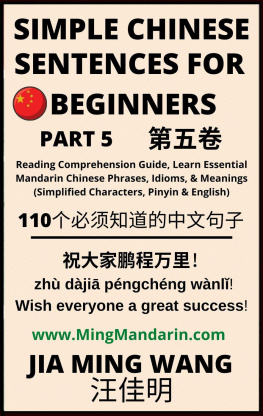
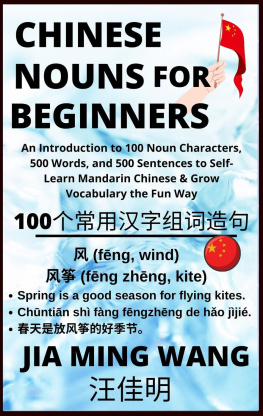
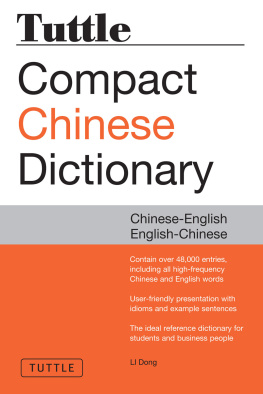
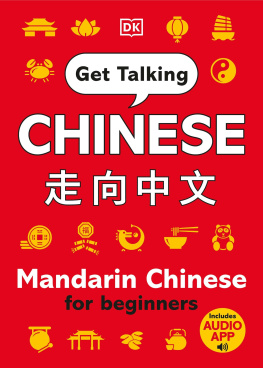
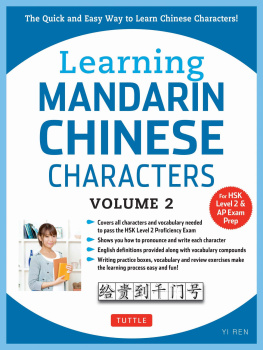
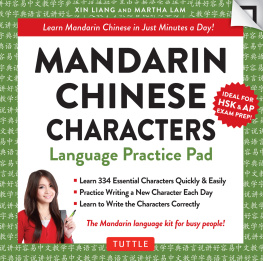
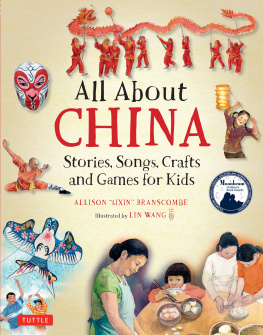

 This book is dedicated to Anas beloved daughter, Marina, a special-needs child who reminds us every day of the miracle of learning.
This book is dedicated to Anas beloved daughter, Marina, a special-needs child who reminds us every day of the miracle of learning.  Copyright 2012 by Ana Lomba. All rights reserved. Except as permitted under the United States Copyright Act of 1976, no part of this publication may be reproduced or distributed in any form or by any means, or stored in a database or retrieval system, without the prior written permission of the publisher. ISBN: 978-0-07-178169-5 MHID: 0-07-178169-2 The material in this eBook also appears in the print version of this title: ISBN 978-0-07-175970-0, MHID 0-07-175970-0. All trademarks are trademarks of their respective owners.
Copyright 2012 by Ana Lomba. All rights reserved. Except as permitted under the United States Copyright Act of 1976, no part of this publication may be reproduced or distributed in any form or by any means, or stored in a database or retrieval system, without the prior written permission of the publisher. ISBN: 978-0-07-178169-5 MHID: 0-07-178169-2 The material in this eBook also appears in the print version of this title: ISBN 978-0-07-175970-0, MHID 0-07-175970-0. All trademarks are trademarks of their respective owners.  Young children are to language what ducklings are to water.
Young children are to language what ducklings are to water.  !
! , which means mother. Second tone: a rising tone. For example
, which means mother. Second tone: a rising tone. For example  , which means numb. Third tone: a tone that first falls and then rises. Fourth tone: a falling tone. Fourth tone: a falling tone.
, which means numb. Third tone: a tone that first falls and then rises. Fourth tone: a falling tone. Fourth tone: a falling tone.